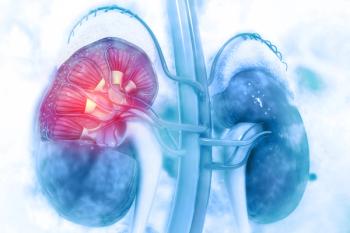
NIH Researchers Say the Science Is Clear: Undetectable Equals Untransmittable in HIV
Researchers from the National Institutes of Health (NIH)’s National Institute of Allergy and Infectious Diseases reviewed clinical trials and cohort studies validating the concept that people living with HIV who have achieved viral suppression can not sexually transmit HIV.
Reviewing scientific evidence underlying the HIV Undetectable = Untransmittable (U = U) concept, researchers from the National Institutes of Health’s National Institute of Allergy and Infectious Diseases (NIAID) write in a JAMA commentary that large clinical trials and cohort studies have validated U = U.
The U = U initiative was launched in 2016 with the Prevention Access Campaign—a health equity initiative with the goal of ending the HIV/AIDS pandemic and HIV-related stigma—with the assertion that patients with HIV who adhere to antiretroviral therapy (ART) and have achieved and sustained an undetectable viral load cannot sexually transmit the virus to others.
“This concept, based on strong evidence, has broad implications for treatment of HIV infection from a scientific and public health standpoint, for the self-esteem of individuals by reducing the stigma associated with HIV, and for certain legal aspects of HIV criminalization,” wrote the researchers.
The concept is based on a growing pile of scientific evidence demonstrating the relationship, starting with a review of scientific data that led to a statement from Switzerland in 2008 indicating that people living with HIV who did not have any other sexually transmitted infection and had achieved and maintained viral suppression for at least 6 months did not transmit HIV sexually.
In 2011, the HIV Prevention Trials Network (HPTN) study 052 of 1763 couples compared the effect of early initiation of ART with delayed initiation of ART in the HIV-positive partner. The researchers found a 96.4% reduction in HIV transmission among those who received early ART initiation versus those in the delayed group. This, according to the NIAID researchers, provided the first evidence of treatment as prevention in a randomized clinical trial. After 5 years of additional follow-up, the protective effect was validated.
Following the HPTN study, the PARTNER 1 study followed 1166 HIV-discordant couples having condomless sexual intercourse in which the partner with HIV was receiving ART and had achieved and maintained viral suppression. After approximately 58,000 condomless sexual acts, there were no HIV transmissions. However, a minority of couples in the study were men who have sex with men (MSM), so the Opposites Attract study followed 343 HIV-discordant MSM couples. After 16,800 acts of condomless anal intercourse, there were not HIV transmissions during 588.4 couple-years of follow-up.
Building on these 2 studies, the PARTNER 2 study assessed 77,000 condomless sexual acts between HIV-discordant MSM couples in which the partner with HIV had achieved viral suppression and the uninfected partner was not receiving pre-exposure prophylaxis or postexposure prophylaxis. There were no cases of HIV transmission.
“Even though the clinical data underpinning the concept of U = U have been accumulating for well over a decade, it is only recently that an overwhelming body of evidence has emerged to provide the firm basis to now accept this concept as scientifically sound,” wrote the NIAID researchers.
As adhering to ART is essential for achieving and maintaining viral suppression, stopping ART represents a significant barrier to successful implementation of U = U. When ART is stopped, viral rebound typically occurs within 2 to 3 weeks, according to the researchers. Both the SPARTAC and SMART clinical trials found that stopping ART resulted in viral rebound to levels that would have been associated with increased risk of HIV transmission.
Reference
Eisinger R, Dieffenbach C, Fauci A. HIV viral load and transmissibility of HIV infection [published online January 10, 2019]. JAMA. doi: 10.1001/jama.2018.21167.
Newsletter
Stay ahead of policy, cost, and value—subscribe to AJMC for expert insights at the intersection of clinical care and health economics.















































